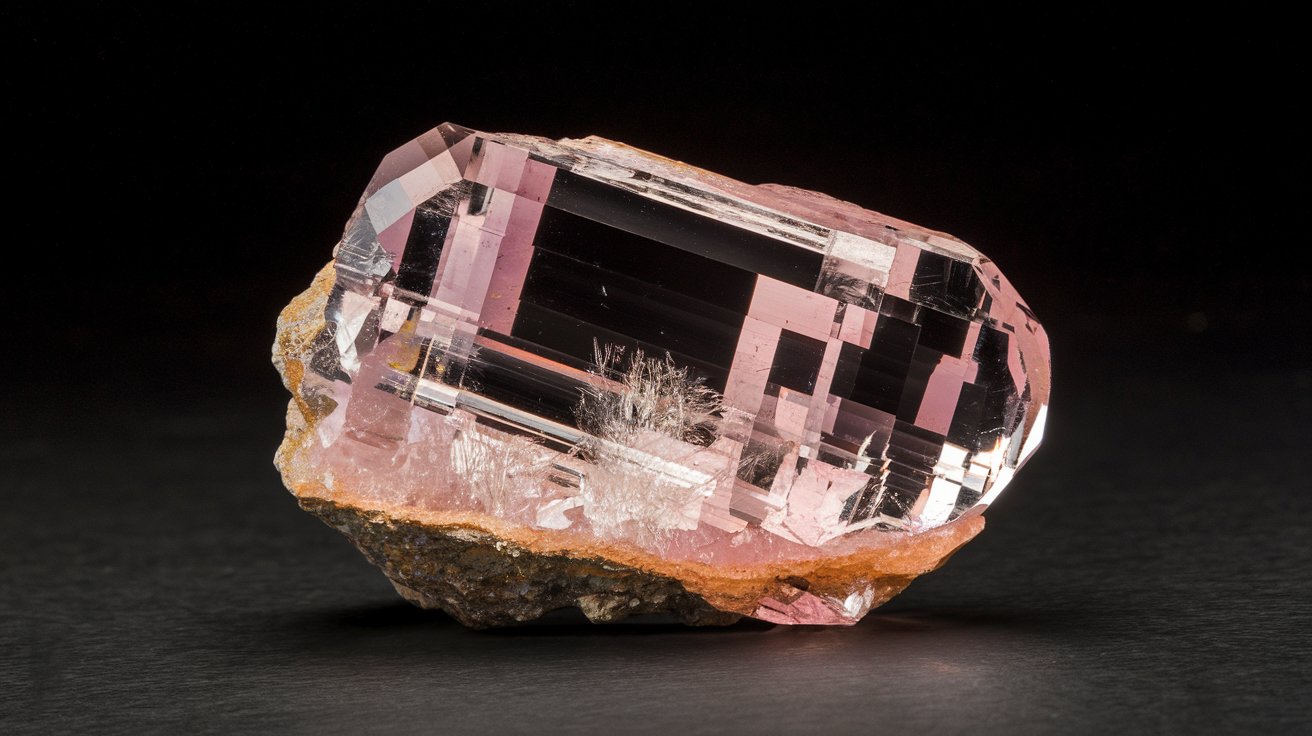
Armalcolite might sound like a fancy mineral from a sci-fi movie, but it's very real and has an out-of-this-world origin. Discovered during the Apollo 11 mission, this mineral is named after astronauts Armstrong, Aldrin, and Collins. Found on the Moon, it’s a titanium-rich oxide mineral that has also been located in some earthly volcanic rocks. Armalcolite is unique because it forms under extreme conditions, making it a rare find on Earth. This mineral not only tells us about the Moon's geology but also provides clues about the early solar system. Ready to learn more? Here are 35 fascinating facts about Armalcolite.
Key Takeaways:
- Armalcolite is a rare mineral discovered on the Moon during the Apollo 11 mission. It has a high melting point, is found in lunar basalts, and is named after the Apollo 11 astronauts.
- The discovery of armalcolite on the Moon has helped scientists understand lunar volcanic history and provides insights into the geological history of both the Moon and Earth.
What is Armalcolite?
Armalcolite is a fascinating mineral with a unique origin story. Discovered during the Apollo 11 mission, it has intrigued scientists and space enthusiasts alike. Let's dive into some interesting facts about this rare mineral.
- Armalcolite was first discovered on the Moon by the Apollo 11 mission in 1969.
- The name "Armalcolite" is derived from the names of the Apollo 11 astronauts: Armstrong, Aldrin, and Collins.
- This mineral is composed primarily of titanium, iron, and magnesium oxides.
- Armalcolite is typically found in lunar basalts, which are volcanic rocks on the Moon.
- It has a metallic luster and is usually opaque.
- The mineral is known for its high melting point, making it extremely heat-resistant.
- Armalcolite is also found in some terrestrial rocks, though it is much rarer on Earth.
- On Earth, it is typically found in ultramafic rocks, which are rich in magnesium and iron.
- The crystal structure of armalcolite is orthorhombic, meaning it has three unequal axes at right angles.
- It is often associated with other minerals such as ilmenite and rutile.
The Discovery and Naming of Armalcolite
The story behind the discovery and naming of armalcolite is as captivating as the mineral itself. Here are some key facts about its origin.
- Armalcolite was discovered in a rock sample collected from the Sea of Tranquility on the Moon.
- The Apollo 11 mission marked the first time humans set foot on the Moon, making the discovery of armalcolite even more historic.
- The mineral was named in honor of Neil Armstrong, Buzz Aldrin, and Michael Collins, the three astronauts of Apollo 11.
- The naming of armalcolite follows a tradition of naming minerals after notable individuals or places.
- The discovery of armalcolite provided valuable insights into the geological history of the Moon.
Physical and Chemical Properties
Armalcolite's unique physical and chemical properties make it a subject of interest for scientists. Let's explore some of these properties.
- Armalcolite has a hardness of 5 to 6 on the Mohs scale, making it relatively hard.
- The mineral has a specific gravity of about 4.0, indicating it is denser than many common minerals.
- It exhibits a sub-metallic to metallic luster, giving it a shiny appearance.
- Armalcolite is usually dark brown to black in color.
- The mineral is opaque, meaning it does not allow light to pass through.
- It has a high melting point of around 1,650 degrees Celsius.
- Armalcolite is chemically stable and does not easily react with other substances.
- The mineral's composition includes titanium dioxide (TiO2), iron oxide (FeO), and magnesium oxide (MgO).
- It often forms elongated, prismatic crystals.
Armalcolite on Earth
While armalcolite is primarily known for its lunar origins, it can also be found on Earth. Here are some facts about its terrestrial occurrences.
- Armalcolite is much rarer on Earth than on the Moon.
- It is typically found in ultramafic rocks, which are rich in magnesium and iron.
- The mineral has been discovered in locations such as the Bushveld Complex in South Africa and the Stillwater Complex in Montana, USA.
- Terrestrial armalcolite is often associated with other titanium-rich minerals like ilmenite and rutile.
- The presence of armalcolite in Earth rocks provides clues about the conditions under which these rocks formed.
Significance of Armalcolite
Armalcolite's discovery and study have significant implications for both lunar and terrestrial geology. Here are some key points about its importance.
- The discovery of armalcolite on the Moon helped scientists understand the Moon's volcanic history.
- Studying armalcolite can provide insights into the processes that formed the Moon's crust.
- The mineral's high melting point makes it of interest for industrial applications, particularly in high-temperature environments.
- Armalcolite's unique composition and structure make it a valuable subject for research in mineralogy and materials science.
- The study of armalcolite and other lunar minerals has contributed to our understanding of the similarities and differences between the Earth and the Moon.
- Armalcolite continues to be a subject of interest for scientists studying the geological history of both the Moon and Earth.
The Final Word on Armalcolite
Armalcolite, discovered during the Apollo 11 mission, is a fascinating mineral with a unique blend of titanium, iron, and magnesium. Named after astronauts Armstrong, Aldrin, and Collins, it symbolizes human achievement in space exploration. Found primarily on the moon, it has also been identified in some terrestrial locations, adding to its intrigue.
This mineral's discovery not only expanded our understanding of lunar geology but also highlighted the potential for future space missions to uncover more unknown elements. Its rarity and connection to a historic event make it a subject of interest for both scientists and enthusiasts.
Understanding armalcolite offers a glimpse into the complexities of planetary formation and the ongoing quest for knowledge beyond our planet. As we continue to explore space, who knows what other remarkable discoveries await? Armalcolite remains a testament to human curiosity and the endless possibilities of scientific exploration.
Frequently Asked Questions
Was this page helpful?
Our commitment to delivering trustworthy and engaging content is at the heart of what we do. Each fact on our site is contributed by real users like you, bringing a wealth of diverse insights and information. To ensure the highest standards of accuracy and reliability, our dedicated editors meticulously review each submission. This process guarantees that the facts we share are not only fascinating but also credible. Trust in our commitment to quality and authenticity as you explore and learn with us.


